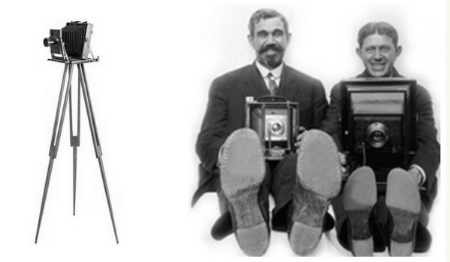Horse in Motion
It may come as a surprise in the twenty-first century to discover that, in the 1880s, details of how objects move were unknown. The human eye, unaided, cannot resolve the details of fast motion. Eadweard Muybridge and his experiments with motion photography, such as this series of pictures of a horse's gait, helped solve this mystery.
Task
Date |
April 1878 | |
Place |
San Francisco | |
Task |
To take 12 consecutive photos of a galloping horse and place them end-in-end in order to produce the effect of a motion picture. See below for details. | |
Tools |
One of our cameras / Two of our photographers
|
|
Cameras |
12 | |
Photographers |
12 (if required) | |
Horse |
1 race horse | |
Rider |
1 jockey | |
Others |
Any other tool or material that might be necessary |
- You can do the experiment on a race track or on a field.
- It is vital that the horse is not harmed - race horses are expensive!
- In a group, make a detailed plan on your project. Take into consideration such points as:
- How many days do you need to complete the project?
- How much money do you expect to spend (remember that all the tools are free of charge)?
- How many tests will you need to do before the final photo-shooting session?
- Present your project to the whole class.

